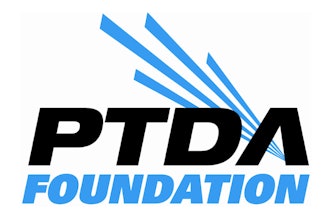In the November/December 2015 edition of Industrial Distribution, I wrote about a controversial decision issued by the National Labor Relations Board (NLRB) — Browning-Ferris Industries, 362 NLRB No. 186 (2015) — which significantly expanded the test it used for 30-years prior Browning-Ferris to determine whether businesses are "joint employers" under the National Labor Relations Act (NLRA). Under the existing bright-line test, businesses could readily determine whether they were a joint employer with other employers who they partnered with — whether contract labor or other outsourced functions.
If so, then both businesses would be subject, for example, to the obligation to negotiate with a labor union over terms and conditions of employment, be subject to claims for violation of the NLRA (i.e., unfair labor practices) and be subject to secondary activity, like strikes, boycotts and/or picketing. Fortunately, the test existing prior to Browning-Ferris was straightforward, driven in large part by a determination of the exercise of direct, actual control over another employer’s workforce to determine joint employer liability.
As is typical with the NLRB, its opinions change with the political tides. While Browning-Ferris was hotly-contested and sharply-divided by political lines, the new conservative majority comprising the NLRB overruled its own 2015 decision in Browning-Ferris on Dec. 14, 2017, restoring the test to what the NLRB used for 30-years. The case Hy-Brand Industrial Contractors and Brandt Construction Co., 365 No. 156 (Dec. 14, 2017) held that two or more entities will be deemed joint employers under the NLRA only if one entity has exercised control over essential employment terms of another entity's employees "directly and immediately" in a manner that is "not limited and routine."
The Browning Ferris standard created a fact-intensive test to determine joint-employer status that analyzed whether the putative joint employer "reserved" joint control, or "indirect" control that was limited and routine, rendering it much easier for labor unions to bind two employers to the obligations detailed above.
Prior to Browning-Ferris, limited supervision (i.e., without ability to hire, fire, discipline, etc.) was insufficient to create joint employer status. In Hy-Brand, the NLRB was highly critical of the Browning Ferris decision, among other things finding that it altered the age-old theory of agency law often relied upon to determine joint employment.
Notably, despite returning to the heightened pre-Browning Ferris standard, the NLRB in Hy-Brand still found joint employment present in the case because the same individual served as an officer for both subject companies and was involved in hiring and firing decisions for contracted employees. However, the overall ruling was a victory for companies that use contract labor, among others.
Importantly, the ruling only applies to joint employment standards under the NLRA — primarily affecting unfair labor practices and collective bargaining — and does not apply to issues under the Fair Labor Standards Act (largely governing wages). Moreover, the sharply-divided NLRB Board — evidenced by the dissent from the two pro-labor board members — likely means the joint employer doctrine will continue to evolve under future administrations. In the interim, however, companies utilizing contract labor or outsourcing core functions should review any applicable contracts to see if they can be strengthened.
Alex Marks contributed to this article. Fred Mendelsohn and Alex Marks are partners at Burke, Warren, MacKay & Serritella in Chicago. Distributors interested in further discussion on this topic can contact Mendelsohn at 312-840-7004 or [email protected], and Marks at 312-840-7022 or [email protected].























